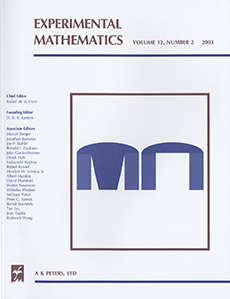Abstract
A group is termed parafree if it is residually nilpotent and has the same nilpotent quotients as a given free group. Since free groups are residually nilpotent, they are parafree. Nonfree parafree groups abound and they all have many properties in common with free groups. Finitely presented parafree groups have solvable word problems, but little is known about the conjugacy and isomorphism problems. The conjugacy problem plays an important part in determining whether an automorphism is inner, which we term the inner automorphism problem. We will attack these and other problems about parafree groups experimentally, in a series of papers, of which this is the first and which is concerned with the isomorphism problem. The approach that we take here is to distinguish some parafree groups by computing the number of epimorphisms onto selected finite groups. It turns out, rather unexpectedly, that an understanding of the quotients of certain groups leads to some new results about equations in free and relatively free groups. We touch on this only lightly here but will discuss this in more depth in a future paper.
Citation
Gilbert Baumslag. Sean Cleary. George Havas. "Experimenting with Infinite Groups, I." Experiment. Math. 13 (4) 495 - 502, 2004.
Information




